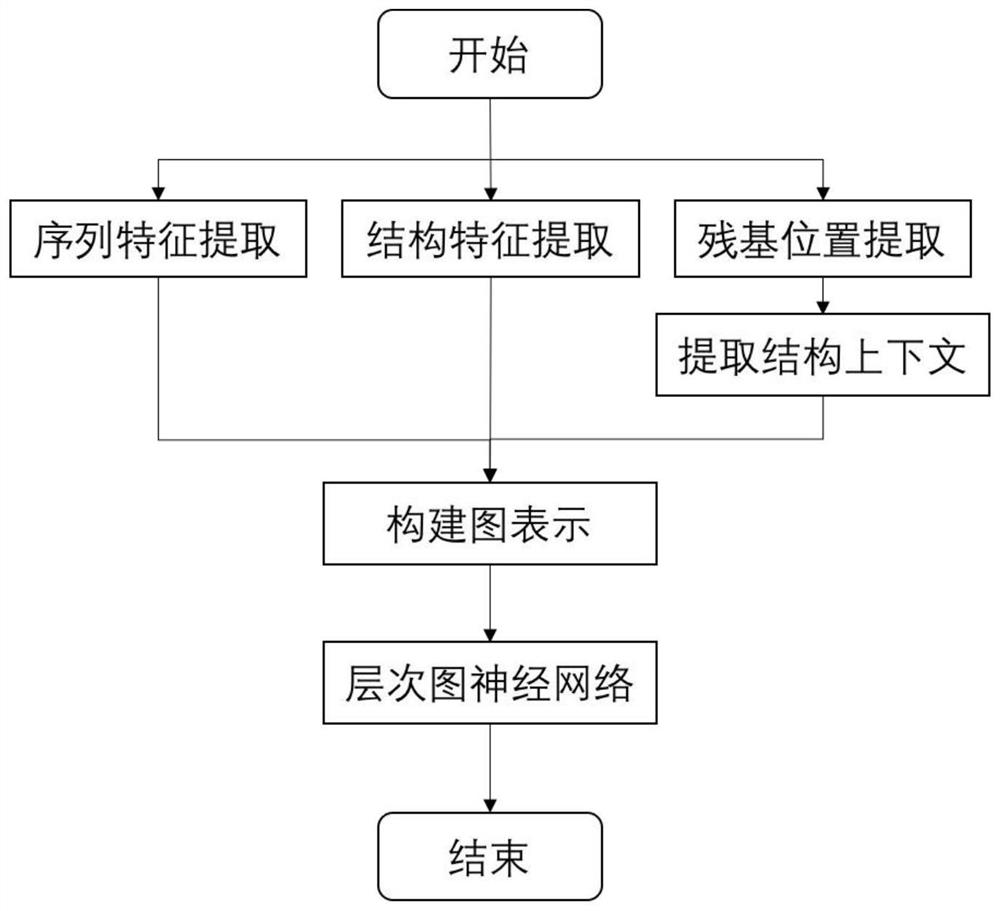Protein and nucleic acid binding site prediction method based on graph neural network characterization
A combination site and neural network technology, applied in the field of bioengineering, can solve the problem of low recognition accuracy of protein nucleic acid binding sites, and achieve the effect of improving prediction accuracy and good generalization performance
- Summary
- Abstract
- Description
- Claims
- Application Information
AI Technical Summary
Problems solved by technology
Method used
Image
Examples
Embodiment Construction
[0042] In this example, the protein and DNA\RNA binding site data set is used as the training set and test set of this example. For the DNA binding data set, the training set contains 573 proteins. After data enhancement, 14479 binding residues are obtained. , 145404 non-binding residues, the test set contains 129 proteins, including 2249 binding residues and 35275 non-binding residues; for the RNA binding data set, the training set contains 495 proteins, after data enhancement, 14609 binding residues were obtained Residues, 122290 non-binding residues, the test set contains 117 proteins, including 2031 binding residues and 35314 non-binding residues. The data augmentation process is to calculate the sequence and structural similarity of proteins and group proteins with sequence similarity greater than 0.8 and TM-score greater than 0.5 into a cluster, and migrate the binding site tags of proteins in each cluster into this cluster on the protein with the most residues.
[0043...
PUM
 Login to View More
Login to View More Abstract
Description
Claims
Application Information
 Login to View More
Login to View More - R&D
- Intellectual Property
- Life Sciences
- Materials
- Tech Scout
- Unparalleled Data Quality
- Higher Quality Content
- 60% Fewer Hallucinations
Browse by: Latest US Patents, China's latest patents, Technical Efficacy Thesaurus, Application Domain, Technology Topic, Popular Technical Reports.
© 2025 PatSnap. All rights reserved.Legal|Privacy policy|Modern Slavery Act Transparency Statement|Sitemap|About US| Contact US: help@patsnap.com



